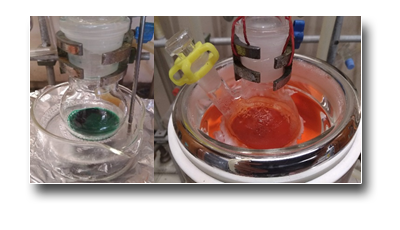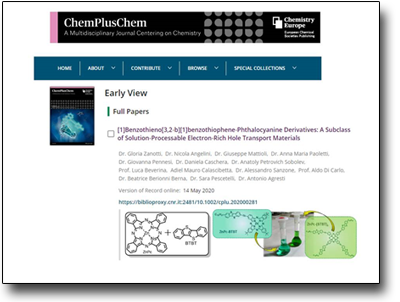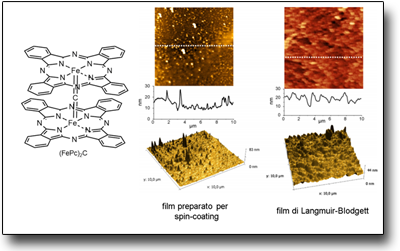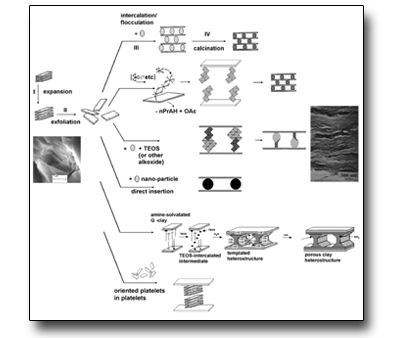
TECHNICAL SPECIFICATIONS
-
ordinary and special glassware for synthesis in controlled environment
-
fume hoods equipped with vacuum lines and inert gases
-
vacuum heating dryers
-
vacuum tube furnace up to 700°C
-
equipment for the separation and purification of samples
-
centrifuge
-
optical microscope
-
laminar flow hood
-
bi-distiller
AVAILABLE TECHNIQUES
-
Design, synthesis and purification of highly conjugated organic and metallorganic molecules with optimized optical and electronic properties depending on the target application (e.g. gas sensing, organic electronics, optoelectronics) via scalable and environmental friendly synthetic routes.
-
Bulk synthesis of hybrid and inorganic perovskites of different composition for the study of fundamental properties.
Case Studies
Synthesis of functionalized zinc phthalocyanines as hole transporting materials for organic electronics
This study describes the synthesis and characterization of two zinc phthalocyanines functionalized with benzothienobenzothiophene derivatives as new potential p-type semiconductors for electronic and optoelectronic technologies. When implemented in perovskite solar cells, both the molecules showed an interesting hole transport activity even in absence of chemical doping.
Si veda: G. Zanotti, N. Angelini, G. Mattioli, A. M. Paoletti, G. Pennesi et al. Chempluschem 2020,.85, 1-12
"Selected for cover feature"

TECHNICAL SPECIFICATIONS
-
Spincoater Convac 1001
-
number of rotations programmable up to 9000 rpm.
-
-
Langmuir-Blodgett KSV 2000 system
-
deposition rate 0.1 to 85mm/min
-
unlimited deposition cycles
-
dynamic range from 0 to 250 mN/m
-
effective area 675 cm2
-
AVAILABLE TECHNIQUES
DEPOSITION OF THIN SOLUTION FILMS- Spincoater Convac 1001
- Langmuir-Blodgett KSV 2000 system
SAMPLES
Spincoater Convac 1001
-
substrates from 5x52 up to 4" wafers
Langmuir-Blodgett KSV 2000 system
-
Maximum substrate size 100x100mm
-
effective area 675 cm2
USED FOR
- Deposition of thin films (mono/multilayers) on several substrates for morphological, optical and electric conductivity studies. Applications in photovoltaics, sensors and electronic organics.
Preparation of thin films of (FePc)2C obtained by spin coating or Langmuir Blodgett for sensing applications and studies on their interaction with NO2
Nitrogen oxides are among the environmental pollutants to be kept strongly under control and metallophthalocyanines (Pc) have proven over the years to be particularly suitable for their detection when implemented in opportune sensors. The study of μ-carbide bridged iron phthalocyanine films deposited by spin coating and Langmuir-Blodgett allowed to compare their behavior in the presence of NO2 in terms of gas-molecule chemical interaction and variation in the electrical conductivity of the films. The similarities and differences between the two systems have been rationalized taking into account the different structural and morphological characteristics of the films induced by the two deposition techniques.
Si veda: A. Capobianchi, A. M. Paoletti, G. Rossi, G. Zanotti, G. Pennesi, Sensors and actuators B 142 (2009) 159-165





 English (UK)
English (UK)  Italiano (Italia)
Italiano (Italia)